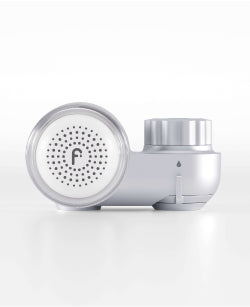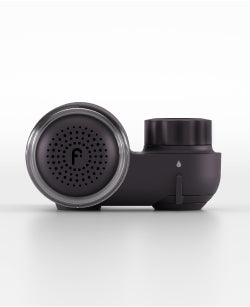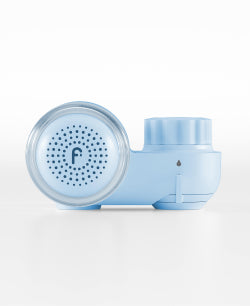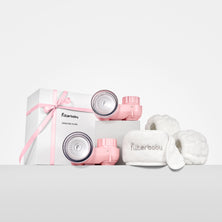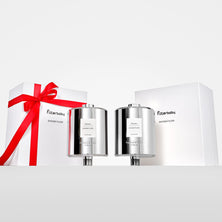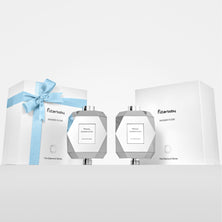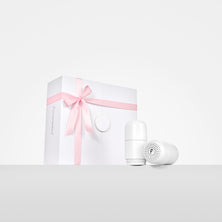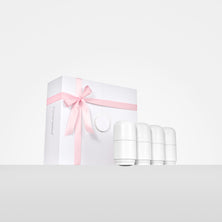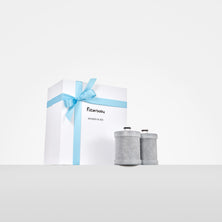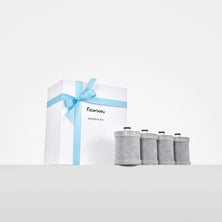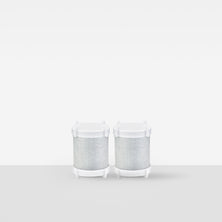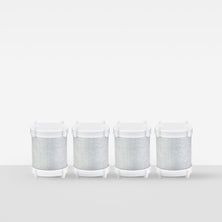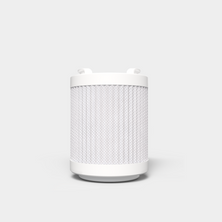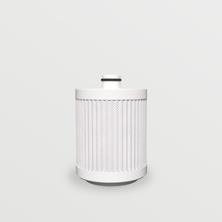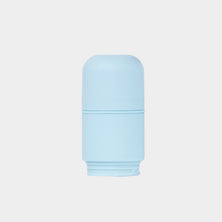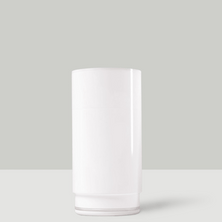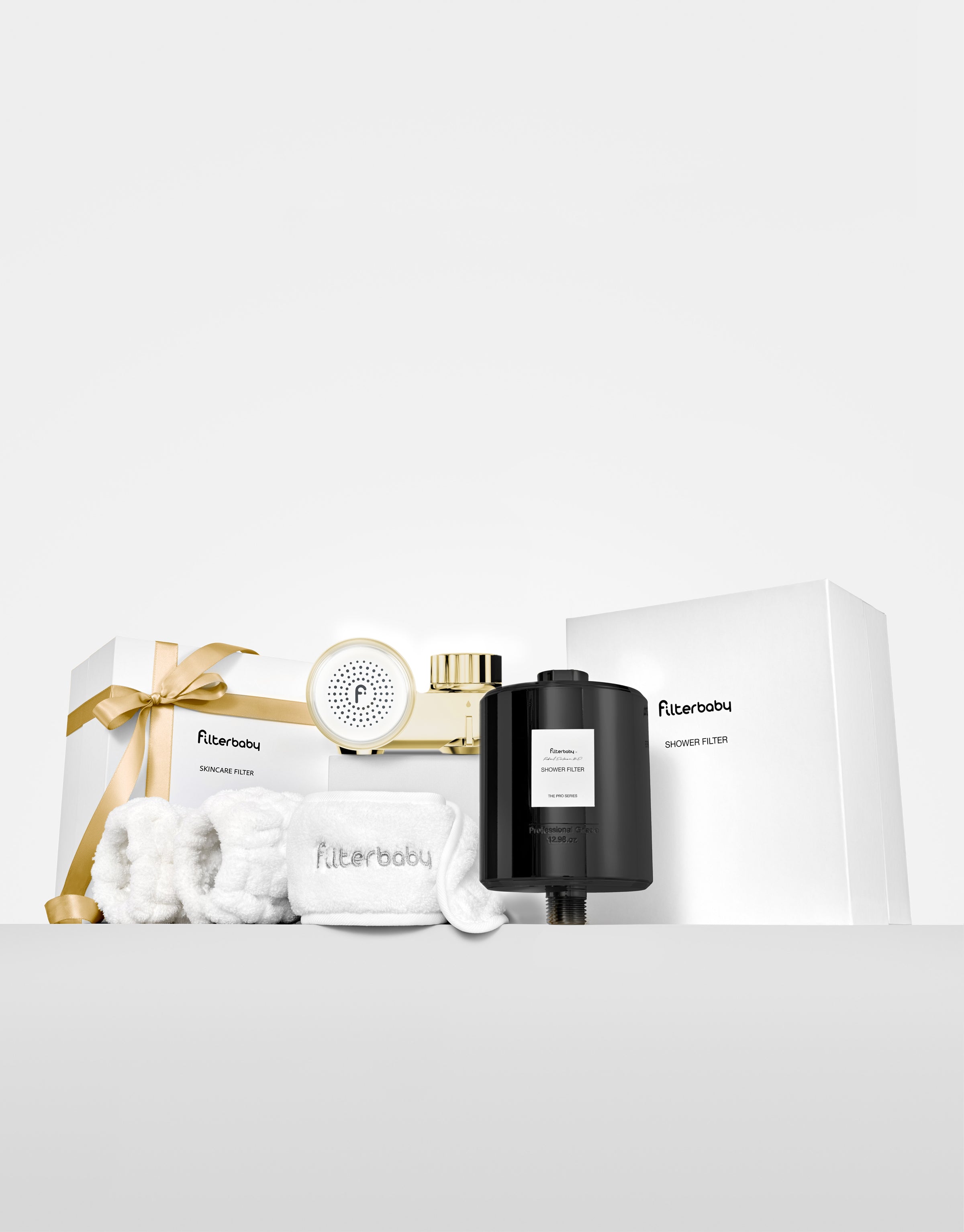So what exactly should a daily skincare routine look like? In this blog, we’ll break down 10 most important steps in skincare.
1. Start with Your Water
Before we get to skincare products, let’s talk about your water. The water you are using could be making a huge difference in your skin. And that impact isn’t always–or usually–a positive one.
The negative effects of hard water are evident. As mentioned by dermatologist, Dr. Alison Moseley, “The excess minerals within hard water can also directly dry on the skin, which clogs the pores and leads to acne breakouts.”
Tap water often holds contaminants such as chlorine, microplastics, metals, and chemicals. Chlorinated water can actually speed up the aging process, leading your skin to wrinkle quicker while also removing natural oils from your skin and potentially causing skin conditions like eczema.
So what can you do about your tap water? You have some options:
- Switch to micellar water ($$$)
- Switch to distilled water ($$)
- Add a faucet filter to ($)
Faucet water filters like Filterbaby’s PROdermis™ Water Filter can help alleviate the problems you face with common tap water contaminants. Using a three-part filtration system, Filterbaby removes chlorine and contaminants from tap water while lightly softening the water. By removing, dissolving, and trapping these tap water contaminants, the products you use can have a higher impact.
2. Makeup Remover / Oil Cleanser
We’re probably not the first to tell you that you need to remove your makeup at night. Removing your makeup with makeup remover should be your night skincare routine’s first step. According to Jamie Cantu–a licensed medical aesthetician–sleeping with makeup can lead to dull skin, acne, irritated eyes, quicker aging, dry skin, and even issues for your eyelashes. Ouch!
If you want to go the extra mile, using an oil to double cleanse your face will help to ensure your skin is makeup-free and ready for the next step!
3. Foam Cleanser
A gentle foam cleanser is essential. After removing makeup at night–or first thing in the morning–use a foam cleanser to prepare your skin for the rest of your routine. A good cleanser should gently clean your skin without leaving your skin feeling strips or squeaky. Washing your face is key to help remove buildup, boost hydration, and maintain clear skin, according to dermatologist Dr. Lela Lankerani.
When choosing a foam cleanser, look for one that suits your skin type. Many cleansers cater specifically with different ingredients to people with dry, oily, sensitive, normal, or acne-prone skin types, so it’s important to find a cleanser that suits your needs.
Are you finding that your skin is extremely sensitive to even the most gentle foam cleanser? Try using your cleanser only at night and simply splashing your face with filtered water in the morning.
4. Eye Cream
We love a good eye cream. Applying eye cream as the first product both in your morning and night skincare routine is key to ensuring you don’t forget! Simply applying under your eye by using your weakest finger–the ring finger–can help to address dark circles, puffiness, and wrinkles as cited by dermatologist Dr. Jodi Ganz.
A more lightweight eye cream can ensure that your makeup products won’t budge, while still giving your under eyes much needed hydration. Ingredients like caffeine to brighten dark circles, peptides to tighten and depuff, ceramides to strengthen your skin and lock in moisture, and hyaluronic acid to hydrate your under eyes can be especially beneficial to look for.
5. Toner
Are you using a toner? You should be. Using a toner both in your morning and night routine will continue to prep your skin to better receive active ingredients. The toner you choose should also be based on your skin type. Some toners are able to gently exfoliate the skin.
For drier skin types, an essence could be more helpful to boost hydration with ingredients such as hyaluronic acid.
To apply your toner, either saturate a cotton pad to pat over your entire face or simply use your hands.
6. Serums
While serums should be applied twice a day, the specific serums you use should differ. Applying a serum early on in your routine is important since they penetrate deeper into your skin and could be less effective later in your routine due to heavier formulations. During the day, it’s beneficial to use serums with antioxidants like Vitamin C, since they will help with protecting your skin from UV rays, blue light, and pollution.
Other serums are beneficial both during the day and at night, including:
- Hyaluronic acid to combat dryness
- Niacinamide to reduce the appearance of redness
- Green tea for acne-prone skin
For more information on choosing helpful ingredients for your skin type, check out our guide.
7. Retinol
Adding retinol to your nighttime skincare routine will overall boost collagen production and cellular rate turnover, helping to solve the majority of your skin concerns like wrinkles and acne while unclogging and shrinking pores. However, retinol is definitely a strong ingredient, so easing into the product three times a week in the beginning first weeks of your retinol journey can help your skin adjust.
For those who still find retinol too harsh, applying retinol mixed in with your moisturizer to buffer it will help ease the side effects. If retinol buffering is still too much, feel free to apply your retinol after your moisturizer. Avoid using retinol during the day as it increases sun sensitivity.
New to retinol? Dermatologists Dr. Muneeb Shah and Dr. L.J. Maxfield created an amazing video guide to retinol that we highly recommend.
8. Moisturizers
Moisturizers can be very heavy–but they do a lot of important moisturizing! You should be using a moisturizer during your morning and night skincare routines to hydrate your skin while retaining all the products applied beforehand. Like serums, the formula you use at night and during the day can be different depending on your preference. Many people enjoy having a lightweight moisturizer during the day and a heavier cream for when they go to sleep.
PRO TIP: If you want to boost the effect of your serums, try to find a moisturizer that has the same active ingredients as your serum.
9. Spot Treatment
After your moisturizer has sunken into your skin, feel free to apply a leave-on spot treatment day and night to any active breakouts. This will help to accelerate the healing process and should be applied after your moisturizer to ensure the treatment stays directly on top of your breakout and doesn’t spread around your face. As relayed by Dr. Yoram Harth, dermatologist and inventor,
According to the American Academy of Dermatology (AAD), concentrations available for topical over-the-counter benzoyl peroxide (BPO) treatments range from 2.5 - 10%, and salicylic acid is available in 0.5 - 2% concentrations. To avoid irritation, dermatologists advise that people start products with a lower 2.5% BPO or salicylic acid concentration before moving to higher concentrations.
Salicylic acid helps to break down pore buildup and remove excess oils, while benzoyl peroxide kills the bacteria causing the acne and reduces your breakout’s inflammation.
10. Sunscreen
If you take anything from this article, please wear sunscreen every single day. No matter what the weather is like, you should be wearing sunscreen. Sunscreen is universally agreed as necessary daily during your morning skincare routine to protect your skin from UV rays–whether you go outside or not.
There are two main types of sunscreen, physical and chemical.
Chemical blocker sunscreens absorb the UV light and turn it into heat so that your skin stays safe. For darker skin tones, chemical blockers may be preferred since they leave no white cast after application.
However, not all physical sunscreens leave this cast as newer formulations have been developed to blend into your skin better than ever before. These physical sunscreens use minerals like zinc oxide and titanium dioxide to reflect UV lights from your skin. Both options are incredibly effective, making either a great option to protect your skin from UV damage!
Worried about your makeup when it is time to reapply? Try a powdered SPF. It’s 2022. There’s no excuse not to wear sunscreen.
